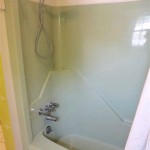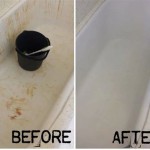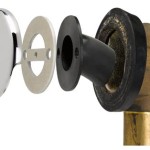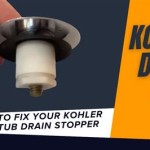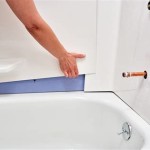Bathtub Drain Solutions for Hair: A Comprehensive Guide
Bathtub drains are notorious for clogging, and hair is a primary culprit. Understanding the causes of hair clogs and exploring effective preventative and remedial solutions is crucial for maintaining a smoothly functioning plumbing system and avoiding costly repairs.
Hair easily finds its way into bathtub drains during showers and baths. As it moves down the drain, it often becomes entangled with other debris, such as soap scum, shampoo residue, and mineral deposits that naturally accumulate within the drainpipe. This entanglement creates a dense mass that restricts water flow and eventually forms a complete blockage. The textured surface of hair strands exacerbates this process, enabling it to latch onto imperfections in the drainpipe lining, thereby accelerating the buildup of clogs.
The consequences of a clogged bathtub drain extend beyond mere inconvenience. A slow-draining tub can lead to the accumulation of stagnant water, creating a breeding ground for bacteria and mold. This, in turn, can result in unpleasant odors and potential health hazards within the bathroom environment. Furthermore, persistent clogs can put undue pressure on the plumbing system, potentially leading to leaks or even burst pipes if the blockage is not properly addressed. Early intervention and preventative measures are, therefore, vital for preserving the integrity of the plumbing and ensuring a hygienic bathroom.
Preventative Measures: Minimizing Hair Entry into Drains
The most effective strategy for dealing with hair-related drain clogs is prevention. Implementing proactive measures to minimize the amount of hair that enters the drain in the first place significantly reduces the likelihood of future blockages. These preventative strategies are relatively simple to implement and provide long-term benefits in terms of plumbing maintenance and cost savings.
One of the most fundamental preventative measures is the consistent use of a bathtub drain strainer. A drain strainer, typically made of metal or plastic, sits atop the drain opening and acts as a physical barrier, capturing hair and other debris before they can enter the drainpipe. There are various types of drain strainers available, ranging from simple mesh screens to more elaborate designs with deeper baskets to accommodate larger volumes of debris. Regular emptying and cleaning of the strainer are essential to maintain its effectiveness. Neglecting this simple task undermines its purpose, as an overfilled strainer will cease to trap hair, allowing it to bypass the barrier and enter the drainpipe.
Another preventative measure is regular grooming practices aimed at minimizing hair shedding during showering or bathing. Brushing hair thoroughly before showering can help remove loose strands, thereby reducing the amount of hair that washes down the drain. Additionally, carefully gathering and disposing of shed hair after showering or bathing can further minimize the risk of drain clogs. While these practices may seem minor, their cumulative effect over time can significantly reduce the load on the drain system.
Furthermore, consider the frequency of hair washing. Over-washing can contribute to increased hair shedding. If excessive hair loss occurs, it might be advisable to explore hair-care products or consult with a dermatologist to address the underlying cause. Although this may not directly prevent hair from entering the drain, it can potentially decrease the amount of hair that ends up in the drain in the long run. Coupling this with regular drain maintenance can prevent clogs much better.
Remedial Solutions: Addressing Existing Hair Clogs
Despite preventative measures, hair clogs can still occur. When a bathtub drain becomes clogged with hair, several remedial solutions can be employed to restore proper drainage. The choice of solution depends on the severity of the clog and the accessibility of the drainpipe.
A manual approach is often the first line of defense against a hair clog. This involves physically removing the blockage using tools such as a bent wire hanger or a specialized drain snake (also known as a plumbing snake or a drain auger). A bent wire hanger can be straightened and the end fashioned into a small hook. Carefully insert the hook into the drain opening and probe around to snag the hair clog. Once the hook has engaged the clog, slowly and carefully pull it out, along with the entangled hair and debris. Repeat this process until the water begins to drain freely. A drain snake is a more robust and flexible tool that can reach deeper into the drainpipe. Insert the snake into the drain opening and rotate it as it is pushed further down the pipe. The rotating motion helps the snake to break up or grab onto the clog. Once the snake has encountered resistance, carefully pull it back out, along with the clog. This manual approach is effective for clogs that are relatively close to the drain opening and not too deeply embedded in the drainpipe.
Chemical drain cleaners are another option for dissolving hair clogs. These cleaners typically contain harsh chemicals, such as sodium hydroxide or sulfuric acid, that break down the organic matter composing the clog. While chemical drain cleaners can be effective, they should be used with caution due to their potential to damage pipes, especially older or more fragile plumbing systems. It is essential to carefully follow the instructions on the product label and to wear appropriate protective gear, such as gloves and eye protection, to prevent skin and eye irritation. Furthermore, avoid mixing different chemical drain cleaners, as this can create dangerous fumes or even cause explosions. Chemical drain cleaners are best used as a last resort when manual methods have failed, and only when the plumbing system is in good condition. Frequent and excessive use of chemical drain cleaners can corrode pipes over time, leading to leaks and other plumbing problems.
A natural alternative to chemical drain cleaners is a mixture of baking soda and vinegar. Pour one cup of baking soda down the drain, followed by one cup of vinegar. Allow the mixture to fizz for about 30 minutes, then flush the drain with hot water. The chemical reaction between baking soda and vinegar can help to dislodge and break down the clog. This method is generally considered safe for pipes and is less likely to cause damage than chemical cleaners. It may, however, require multiple applications to fully clear a stubborn clog. For added effectiveness, consider pouring boiling water down the drain after the baking soda and vinegar mixture has had time to react. The boiling water can help to dissolve any remaining residue and flush the drainpipe clean.
Tools and Techniques for Effective Drain Clearing
Successfully clearing a hair clog from a bathtub drain often requires the use of specific tools and the application of appropriate techniques. Selecting the right tool for the job and employing proper techniques can significantly increase the chances of success and minimize the risk of damaging the plumbing system.
A plunger, while typically associated with toilet clogs, can sometimes be effective for clearing bathtub drain clogs as well. Ensure that there is enough water in the tub to cover the cup of the plunger. Create a tight seal around the drain opening with the plunger and then use vigorous up-and-down motions to create pressure and suction. The pressure and suction can help to dislodge the clog and force it down the drainpipe. Repeat this process several times, and then remove the plunger to see if the water drains freely. If the water still drains slowly, repeat the plunging process. The effectiveness of a plunger depends on the location and composition of the clog. It is more likely to be effective for clogs that are close to the drain opening and relatively loose. For more stubborn or deeply embedded clogs, other tools or techniques may be necessary.
As previously mentioned, a drain snake is a versatile and effective tool for clearing hair clogs. When using a drain snake, it is important to proceed with caution to avoid damaging the pipes. Insert the snake slowly and carefully into the drain opening, and rotate it as it is pushed further down the pipe. If you encounter resistance, do not force the snake, as this could damage the pipe or cause the snake to become stuck. Instead, try rotating the snake in the opposite direction or gently pulling it back and re-inserting it at a slightly different angle. Once the snake has encountered the clog, continue rotating it to break up or grab onto the clog. Then, slowly and carefully pull the snake back out, along with the clog. After removing the clog, flush the drain with hot water to ensure that any remaining debris is cleared.
In situations where the clog is particularly stubborn or difficult to reach, it may be necessary to disassemble part of the drainpipe to gain access to the blockage. This typically involves removing the drain stopper and the overflow plate, which is located on the side of the bathtub. Once these components are removed, you may be able to access the drainpipe directly and use a tool such as a drain snake or a bent wire hanger to remove the clog. Before disassembling any plumbing components, it is essential to shut off the water supply to the bathtub to prevent leaks. If you are not comfortable disassembling the drainpipe yourself, it is best to consult with a qualified plumber. Improper disassembly or reassembly of plumbing components can lead to leaks and other plumbing problems.

Tubshroom 1 5 In 75 Bathtub Drain Protector Hair Catcher Tpr With Abs White Chrome And Stopper Plug Bundle Hdtsstp315

Bathtub Drain Protector

Tubshroom 1 5 In 75 Bathtub Drain Protector Hair Catcher Tpr With Abs White Chrome And Stopper Plug Bundle Hdtsstp315

Lekeye Drain Hair Catcher Bathtub Shower Trap Strainer Stainless Steel Protector Patented

4 Pack Hair Catcher Shower Drain Bathtub Cover Sink Tub Stopper

Tubshroom Bathtub Drain Hair Catcher Honest Review

Bathtub Drain Stopper Tub Hair Catcher Bath T Mercadolivre

Lekeye Drain Hair Catcher Bathtub Shower Trap Strainer Stainless Steel Protector Patented

Why Should I Install A Hair Catcher In My Bathtub Drain Strain

Danco 2 In 1 Bathtub Hair Catcher And Stopper 10772 At Com
Related Posts

